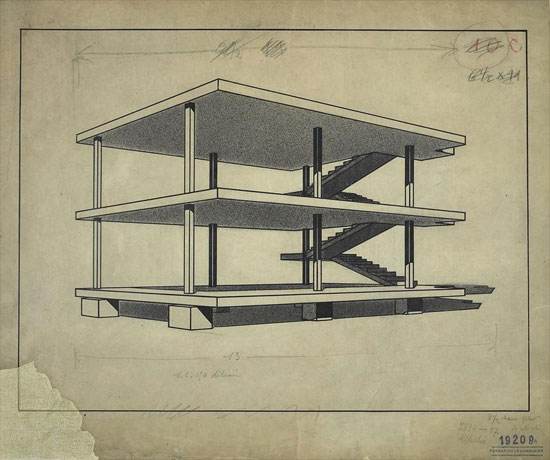Adolf Max Vogt, Le Corbusier, the Noble Savage: Toward an Archaeology of Modernism, trans. Radka Donnell (Cambridge: MIT Press, 1998), 24.
On abstraction as ontologically part of human experience see: Paolo Virno, Convenzione e Materialismo. Unicità senza aura (Rome: Edizioni Theoria, 1986).
Marx discussed the issue of abstraction most notably in his introduction to the Grundrisse. See Karl Marx, Grundrisse: Foundations of the Critique of Political Economy (London: Penguin Classics, 1993), 81–114.
Ibid., 104.
Ibid., 104.
Alfred Sohn-Rethel, Intellectual and Manual Labor: A Critique of Epistemology (London: The MacMillan Press, 1978).
Ibid., 35.
Ibid., 36.
See: Mario Carpo, The Alphabet and the Algorithm (Cambridge: MIT Press, 2011). See also: Sergio Rossi, Dalle botteghe alla accademie. Realtà sociale e teorie artistiche a Firenze dal XIV al XVI secolo (Milan: Feltrinelli, 1980), 54–73.
Ibid. 113–16.
Bernard Cache, lecture delivered at Environment Review Days, April 10–12, 2013, a conference focusing on the theme of “The Project.” Arranged by the Strong Research Environment Architecture in the Making, Stockholm School of Architecture.
Erwin Panofsky, Perspective as Symbolic Form, trans. Christopher Wood (New York: Zone Books, 1991), 31.
Hans Belting, Florence and Baghdad: Renaissance Art and Arab Science (Cambridge, MA: Belknap Press, 2011), 150–62.
Far from being an invention of the fifteenth century, perspective in the form of mathematically quantifiable space was already at work in the design of Florence major public spaces. See Marvin Trachtenberg, Dominion of the Eye: Urbanism, Art, and Power in Early Modern Florence (New York: Cambridge University Press, 1999)
See Arnaldo Bruschi, “Considerazioni sulla ‘maniera matura’ del Brunelleschi in Arnaldo Bruschi, L’antico, la tradizione, il moderno da Arnolfo a Peruzzi, saggi sull’architettura del Rinascimento (Firenze: Electa, 2004), 87–122.
Sohn-Rethel, Intellectual and Manual Labor,45.
Peter Halley, “The Crisis in Geometry,” Arts Magazine, vol. 58, no. 10 (June 1984): 20–24.
Ildefonso Cerdà, Cerdà: The Five Bases of the General Theory of Urbanization, ed. Arturo Soria y Puig (Madrid: Electa, 2000).
Ibid, 79.
See Ross Exo Adams, “The Burden of the Present: On The Concept of Urbanization,” Society and Space →.
